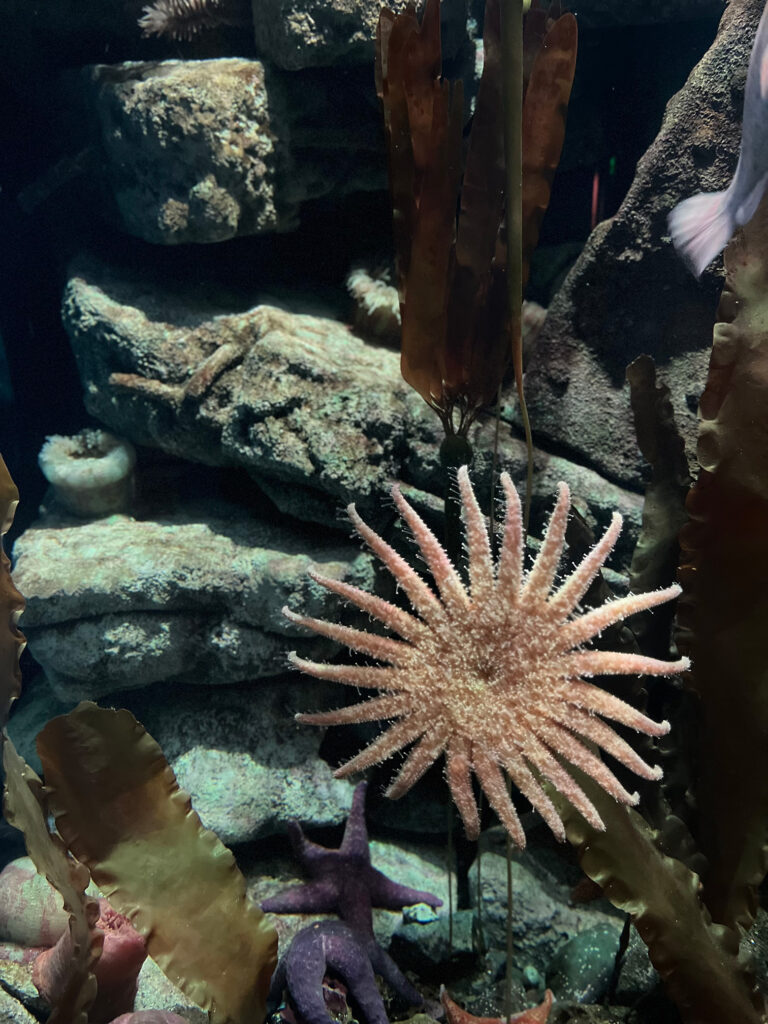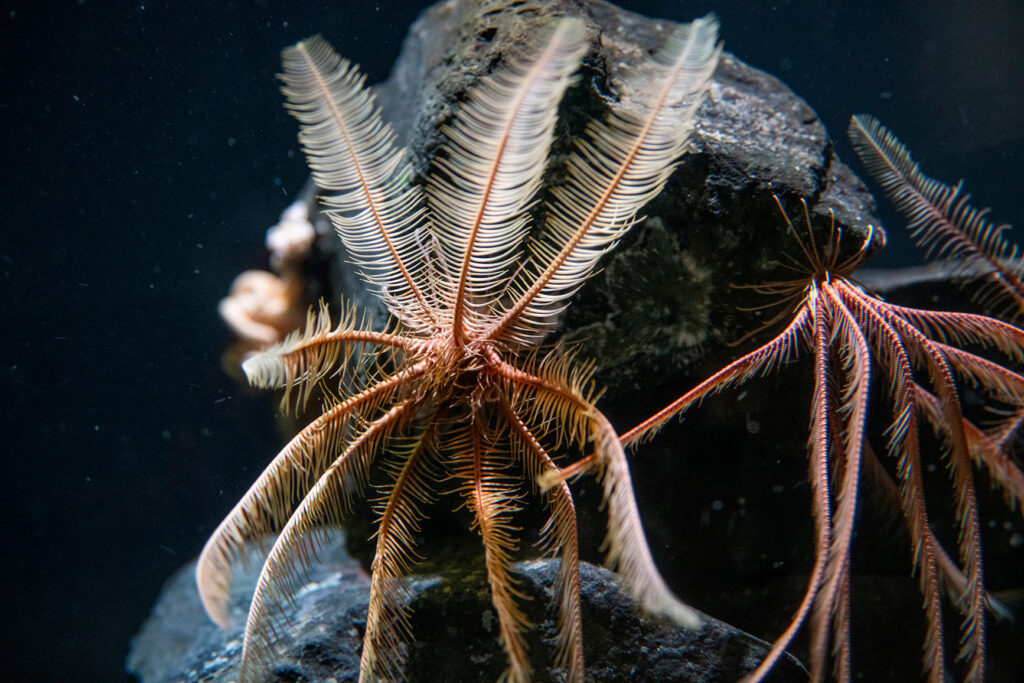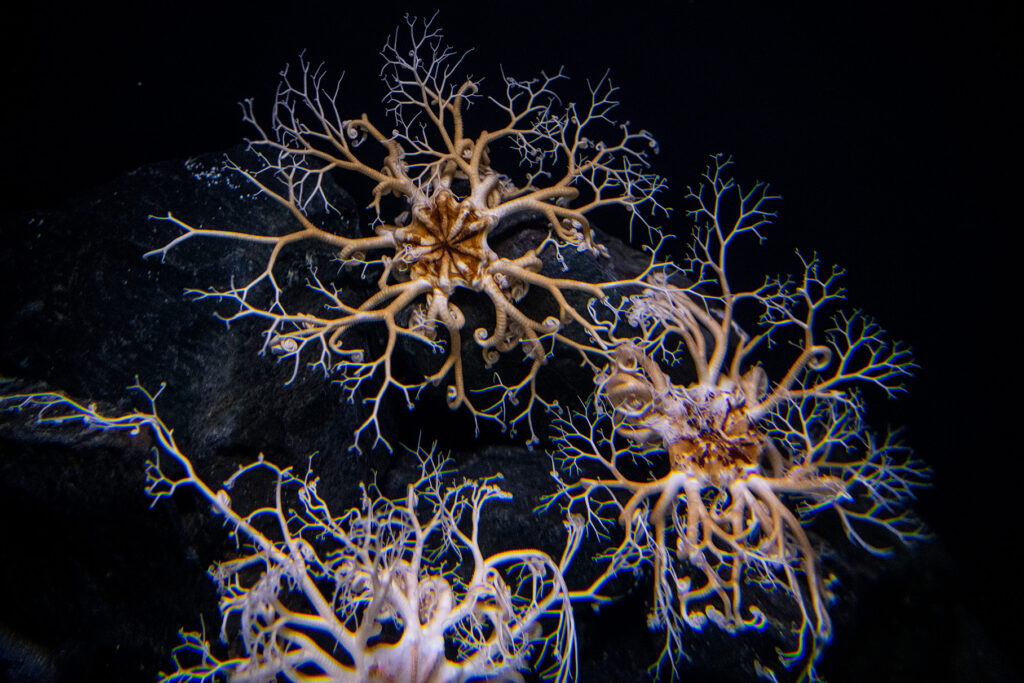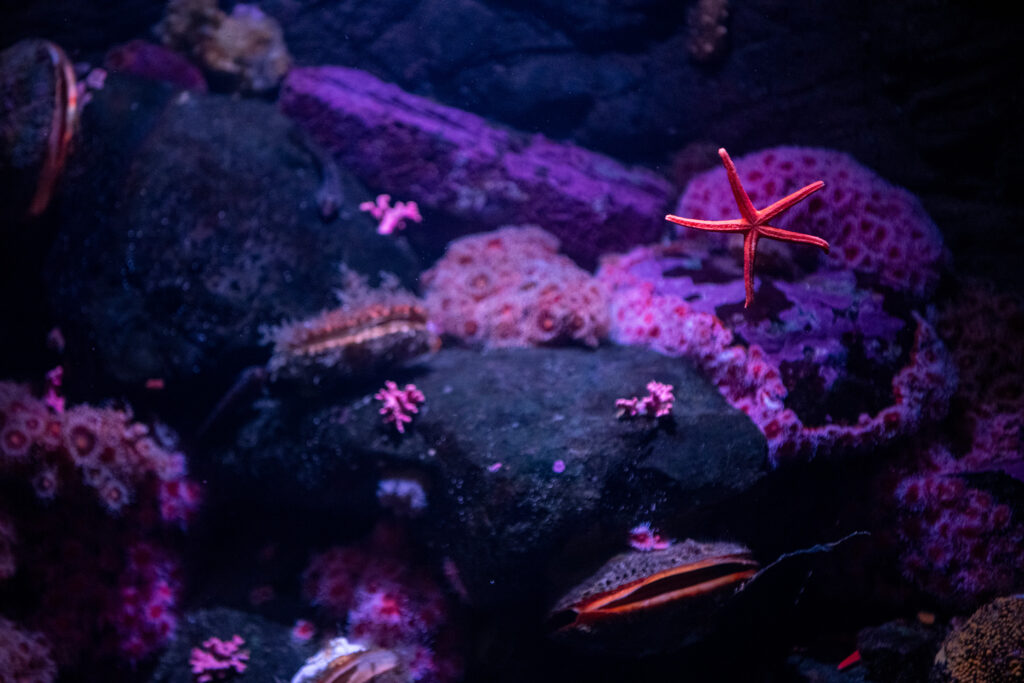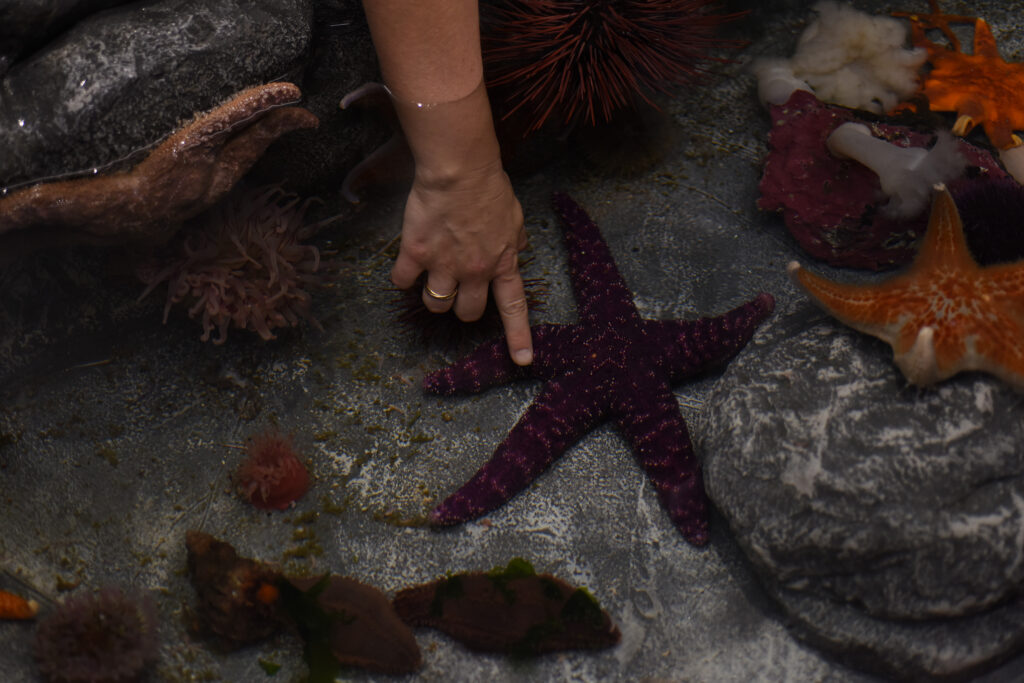2024 resolution: Meet the shining stars of the Pacific Seas Aquarium.
Of course, we’re talking about sea stars, commonly referred to as starfish. Point Defiance Zoo & Aquarium is home to a variety of sea star species, all with incredibly unique characteristics and all worth celebrating.
Sunflower Star
Point Defiance Zoo & Aquarium is home to sunflower stars, one of the fastest sea stars in the ocean. The sunflower star can move at a remarkable speed of over 2-3 feet per minute, or .07 miles per hour.
“Sunflower stars grow quickly and have a fast metabolism compared to some of our other native sea stars,” said aquarist Mark. “A sunflower star typically starts life with just five arms but has up to 24 arms at full maturity.”
Sunflower stars are efficient hunters that benefit the ecosystem by eating a variety of animals including sea urchins.
Where to find them: There are six sunflower sea stars in the Pacific Seas Aquarium, but some currently live behind the scenes. You can look for one in the Northwest Waters habitat and one in the Under the Narrows habitat.
Feather Star
At first glance, feather stars look like underwater planets. But this elegant animal can swim! Feather stars wave their arms to escape from a predator, such as a crab or sunflower star. They also use their feathery arms to gather tiny bits of floating plankton for food.
Where to find them: Look for the feather stars in the Stars of the Sea habitat next to the Under the Narrows habitat.
Basket Star
Basket stars have a mass of twisting arms that can each measure up to 3 feet long. This brittle star uses some of its curly arms to hold onto the rocky sea floor, then uses the rest of its arms to create a “basket” effect to catch plankton as they whiz by.
Where to find them: Look for the basket stars in the Stars of the Sea habitat next to the Under the Narrows habitat.
Blood Star
Brilliantly reddish-orange, blood stars have four to six long, skinny arms that can grow up to 10 inches in diameter. Feeding on bacteria and other tiny particles, they live in protected crevices and pools from the tidal zone to 2,200 feet between Alaska and Baja California. Pacific blood stars are omnivorous, unlike most sea stars in the Pacific Northwest, which are carnivorous. They eat sea sponges by extruding their stomachs and placing them on the surface of their prey.
Where to find them: Look for blood stars in the Tidal Touch Zone and the North Puget Sound Color habitat.
Ochre Star
Ochre stars live among rocks in tidal areas and are a common sight in Pacific Coast tidepools. They come in diverse colors: yellow, orange, brown, red, or purple. Most have five arms, but some have four or seven. And like other sea stars, they can regenerate arms. They eat mussels, barnacles, and snails by pushing their stomachs out of their bodies and into the shells of their prey.
Where to find them: Ochre stars are in many of the habitats in the aquarium. Guests may also feel and learn more about them in the Tidal Touch Zone.
Visit the Pacific Seas Aquarium any day the zoo is open.
